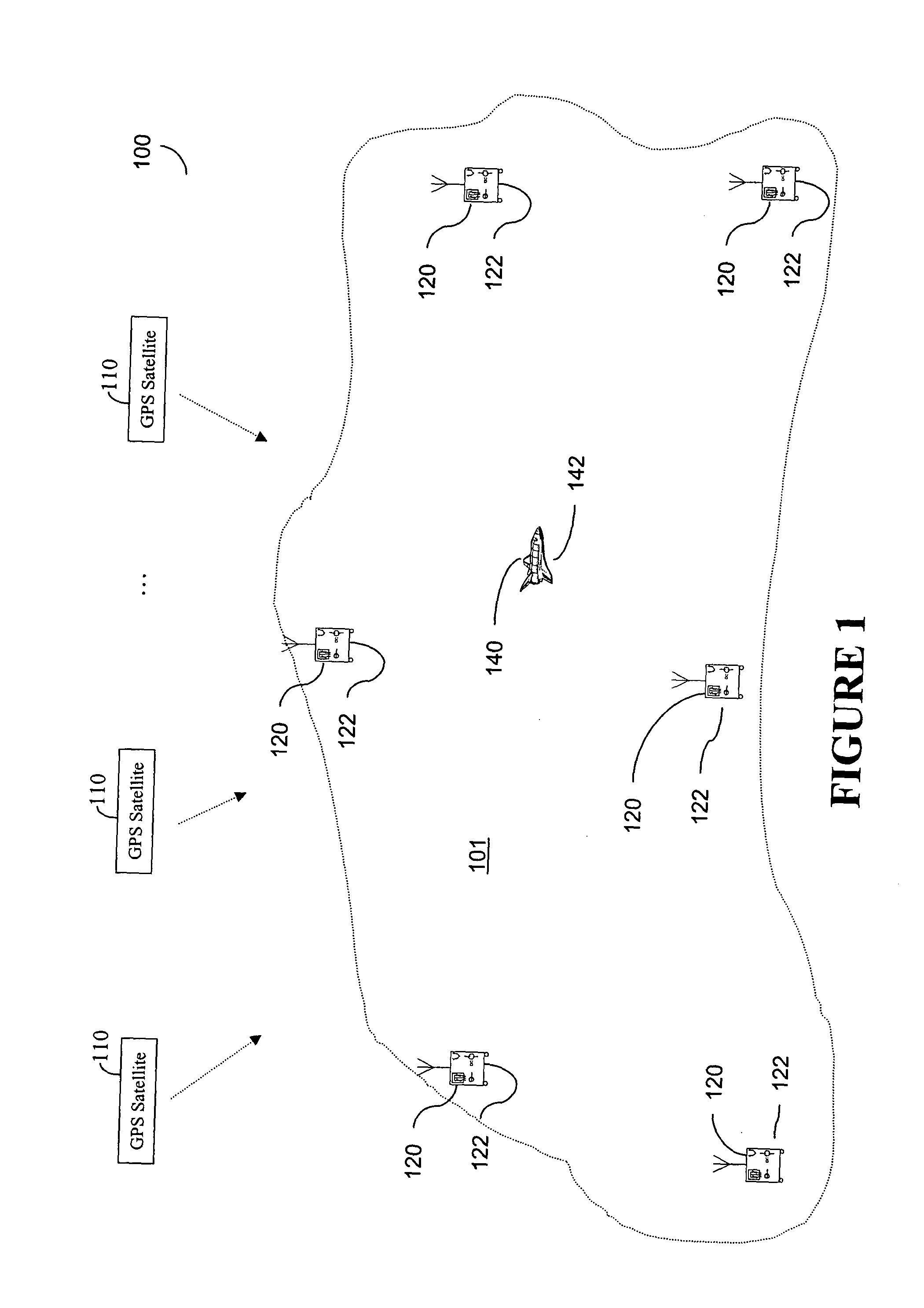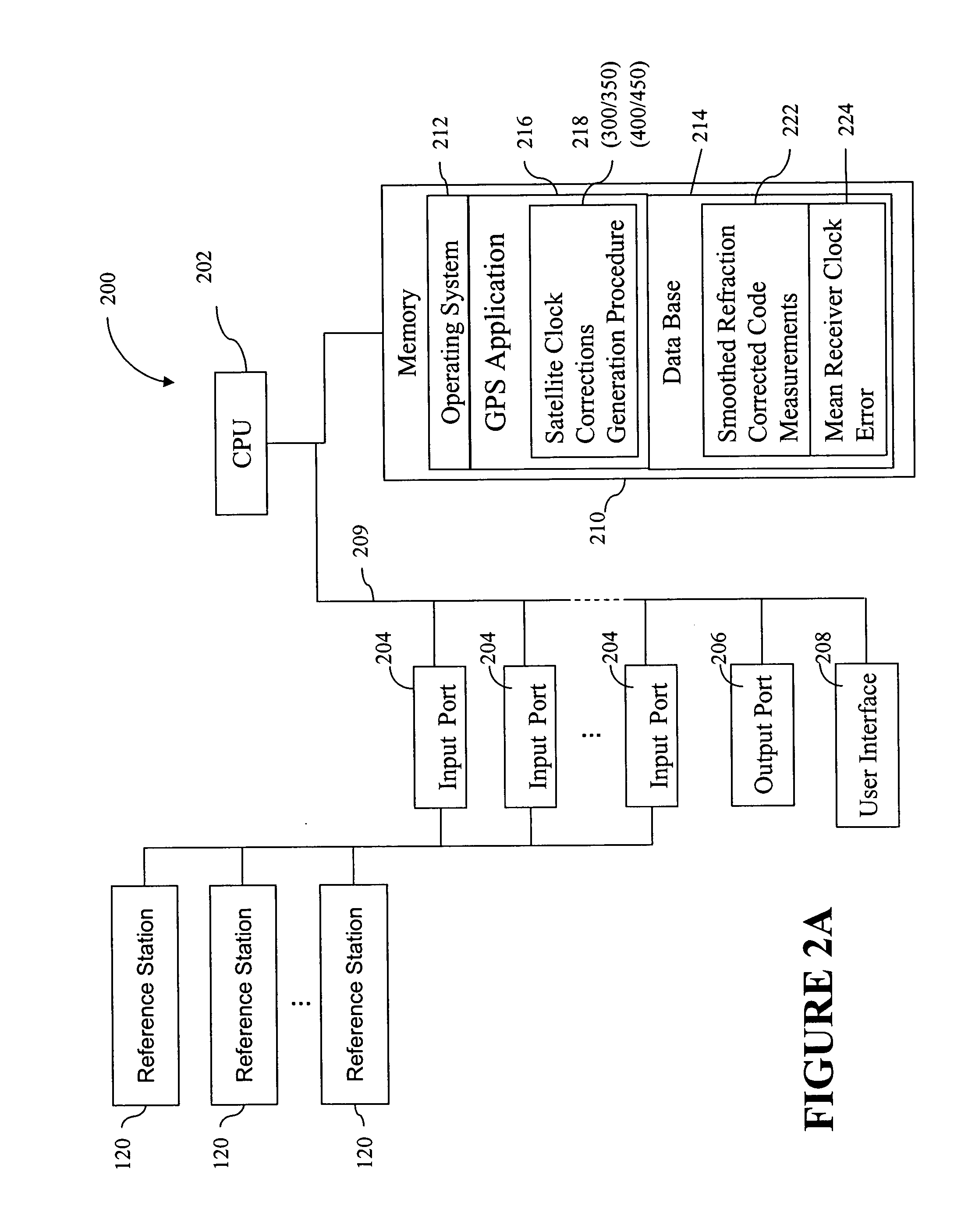Method for generating clock corrections for a wide-area or global differential GPS system
a global differential and gps system technology, applied in the field of positioning and navigation systems, can solve the problems of destroying the perfect correlation inherent in satellite clock errors, and achieve the effects of reducing multipath noise, striking simplicity and robustness
- Summary
- Abstract
- Description
- Claims
- Application Information
AI Technical Summary
Benefits of technology
Problems solved by technology
Method used
Image
Examples
Embodiment Construction
FIG. 1 illustrates a wide-area or global DGPS (WADGPS) system 100 according to one embodiment of the present invention. As shown in FIG. 1, the WADGPS network 100 includes a plurality of satellites 110, a plurality of reference stations 120 each having a GPS receiver 122, and communication links (not shown) among the satellites 110 and the reference stations 120. The reference stations 120 are placed at known locations across a wide area 101, such as a continent, for a wide-area DGPS system, or across the globe for a global DGPS network. The WADGPS network 100 may be utilized by one or more users 140 each having a user GPS receiver 142 for positioning and / or navigation purposes.
The WADGPS system 100 further includes a main computer system (not shown in FIG. 1) that is shared among the reference stations. The main computer system can be located at one of the reference stations or at a different place in or near the area 101. FIG. 2A shows a block diagram of an exemplary computer sys...
PUM
 Login to View More
Login to View More Abstract
Description
Claims
Application Information
 Login to View More
Login to View More - R&D
- Intellectual Property
- Life Sciences
- Materials
- Tech Scout
- Unparalleled Data Quality
- Higher Quality Content
- 60% Fewer Hallucinations
Browse by: Latest US Patents, China's latest patents, Technical Efficacy Thesaurus, Application Domain, Technology Topic, Popular Technical Reports.
© 2025 PatSnap. All rights reserved.Legal|Privacy policy|Modern Slavery Act Transparency Statement|Sitemap|About US| Contact US: help@patsnap.com



